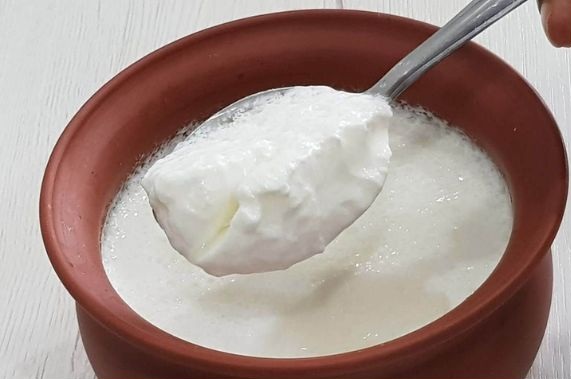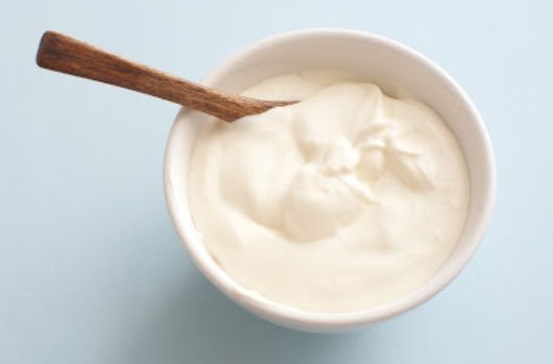Have you ever wondered whether curd and yogurt are the same? Many people use these terms interchangeably, but they are actually distinct dairy products. If you’ve ever searched for "curd vs yogurt," "difference between dahi and yogurt," or "is dahi and yogurt the same?", you are not alone—this is a common question!
The simple answer is no, curd and yogurt are not the same. Curd (dahi) is a staple in Indian households and is commonly used in dishes like lassi, kadhi, dahi vada, curd rice, dahi papdi chaat, and mishti dahi. It is made at home through natural fermentation. Yogurt, on the other hand, is a commercially produced dairy product created using specific bacterial cultures. It is available in a variety of flavours like vanilla, strawberry, and blueberry.
While both curd and yogurt come from fermented milk, they differ in bacterial composition, fermentation process, texture, and taste. So, what exactly sets them apart? Let’s explore their definitions, key differences, and interesting facts to clear up this common confusion!
What is Curd?

Curd, also known as dahi, is a naturally fermented dairy product formed by the action of lactic acid bacteria. It is made by adding a curd starter or natural acidic agents like lemon juice or tamarind to warm milk. This initiates a lactic acid fermentation process, where bacteria convert lactose (milk sugar) into lactic acid, causing the milk to coagulate and thicken into curd.
Difference Between Digital Wallets and UPI
Scientific Process of Curd Formation:
Bacteria Involved – The primary bacteria responsible for curd formation come from the environment or a curd starter. These include species of Lactococcus lactis and Lactobacillus delbrueckii.
Lactic Acid Production – These bacteria break down lactose into lactic acid (C3H6O3) through glycolysis.
Milk Coagulation – The increase in acidity lowers the pH level (from ~6.7 to ~4.6), destabilizing casein proteins, which causes them to clump together, forming thick curd.
Key Facts About Curd (Dahi):
- It is homemade and widely consumed in Indian households.
- The fermentation process is natural and uncontrolled, leading to variations in texture and taste.
- The microbial composition depends on temperature, milk quality, and starter culture used.
- It is used in dishes like raita, lassi, buttermilk, kadhi, and dahi vada.
- The acidity and microbial content can vary, making its taste mildly sweet or tangy.
What is Yogurt?

Yogurt is a commercially produced fermented dairy product made using specific bacterial strains like Lactobacillus bulgaricus and Streptococcus thermophilus. Unlike curd, the fermentation process in yogurt happens in a controlled environment to maintain uniform taste, texture, and probiotic benefits.
Scientific Process of Yogurt Formation:
Bacteria Involved – Yogurt fermentation uses defined starter cultures of Lactobacillus bulgaricus and Streptococcus thermophilus, which work symbiotically.
Lactic Acid Fermentation – These bacteria convert lactose into lactic acid, reducing the pH level to ~4.5, creating a thicker and creamier consistency.
Protein Denaturation – The drop in pH causes casein micelles (milk proteins) to aggregate, forming a uniform gel-like structure, characteristic of yogurt.
Key Facts About Yogurt:
- Made using scientifically controlled bacterial cultures to ensure consistency.
- It comes in various types, such as plain yogurt, Greek yogurt, and flavoured yogurt. The key difference between Greek yogurt and regular yogurt lies in the straining process. Greek yogurt is strained to remove whey, giving it a thicker and creamier consistency compared to regular yogurt.
- The bacterial strains remain active and alive, making it a probiotic-rich food.
- It has a smooth, uniform texture and is used in smoothies, desserts, salad dressings, and breakfast bowls.
- The standardized production process ensures it has a consistent taste and texture across batches.
Science Behind It: How Do Magnets Work?
Curd vs Yogurt Differences
Below is a detailed comparison of their key differences in a nutshell.
| Aspect | Curd | Yogurt |
| Fermentation Process | Naturally fermented using a curd starter or acidic agent | Fermented using specific bacterial strains |
| Preparation Method | Made at home | Made in controlled industrial environments |
| Texture & Taste | Varies; Mildly sweet or tangy | Uniform taste and texture |
| Types Available | Mostly homemade, regional variations | Plain yogurt, Greek yogurt, Flavoured yogurt |
| Usage in Cuisine | Used in Indian dishes like raita, lassi, kadhi, and buttermilk | Used in Western dishes like smoothies, desserts, and dips |
Conclusion
While curd (dahi) and yogurt may appear similar, they have distinct differences in preparation, fermentation process, and usage. Dahi is a naturally fermented dairy product, commonly prepared at home in Indian households, whereas yogurt is made using specific bacterial cultures in controlled conditions to ensure consistency.
Curd is a staple in traditional Indian cuisine, whereas yogurt has gained global popularity with different varieties like Greek yogurt, flavored yogurt, and probiotic-rich options. Understanding these differences helps clarify why curd and yogurt are not the same
Now that you know the difference, the next time someone asks "Is curd and yogurt the same?", you will have the perfect answer!
Comments
All Comments (0)
Join the conversation